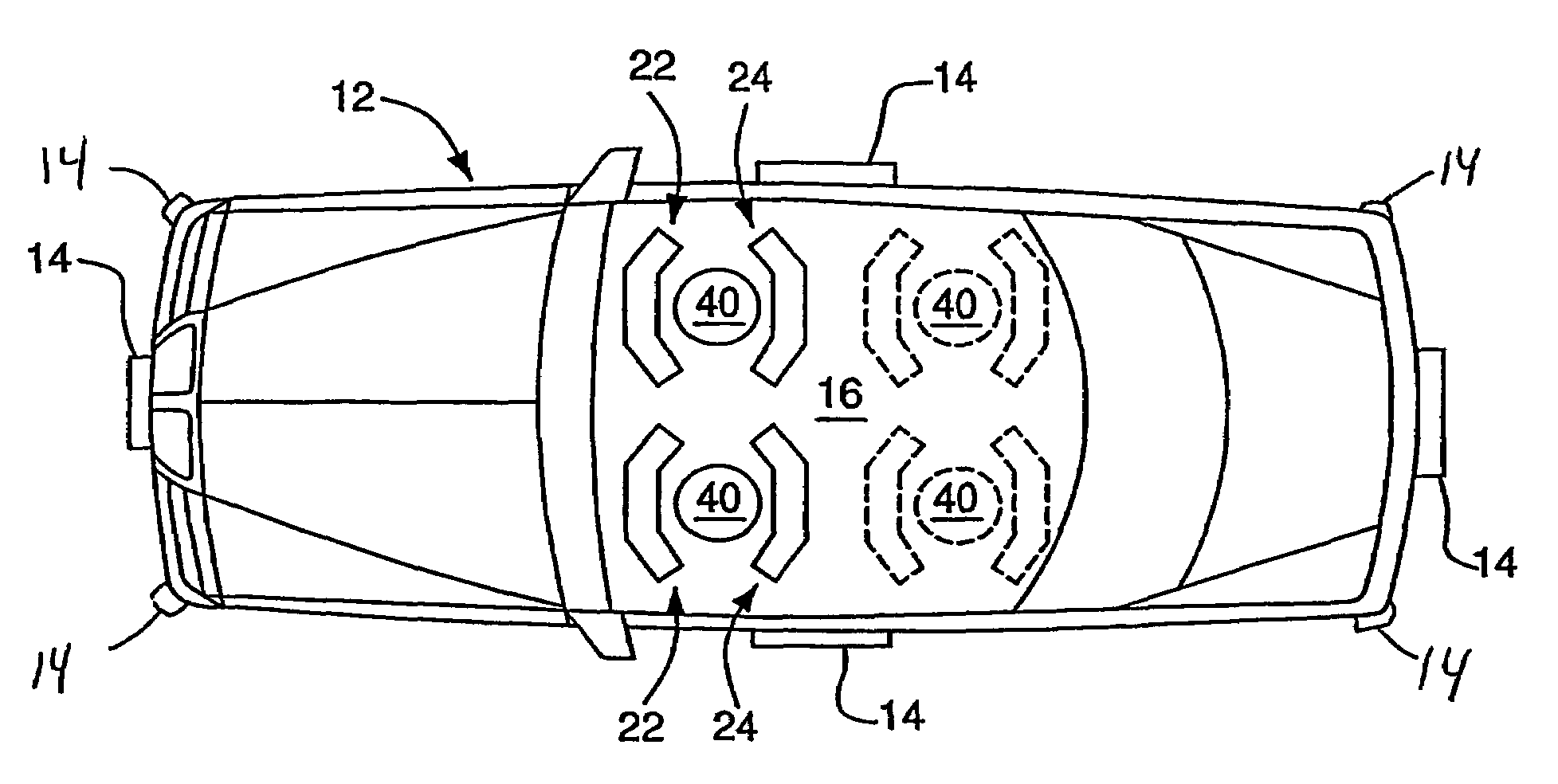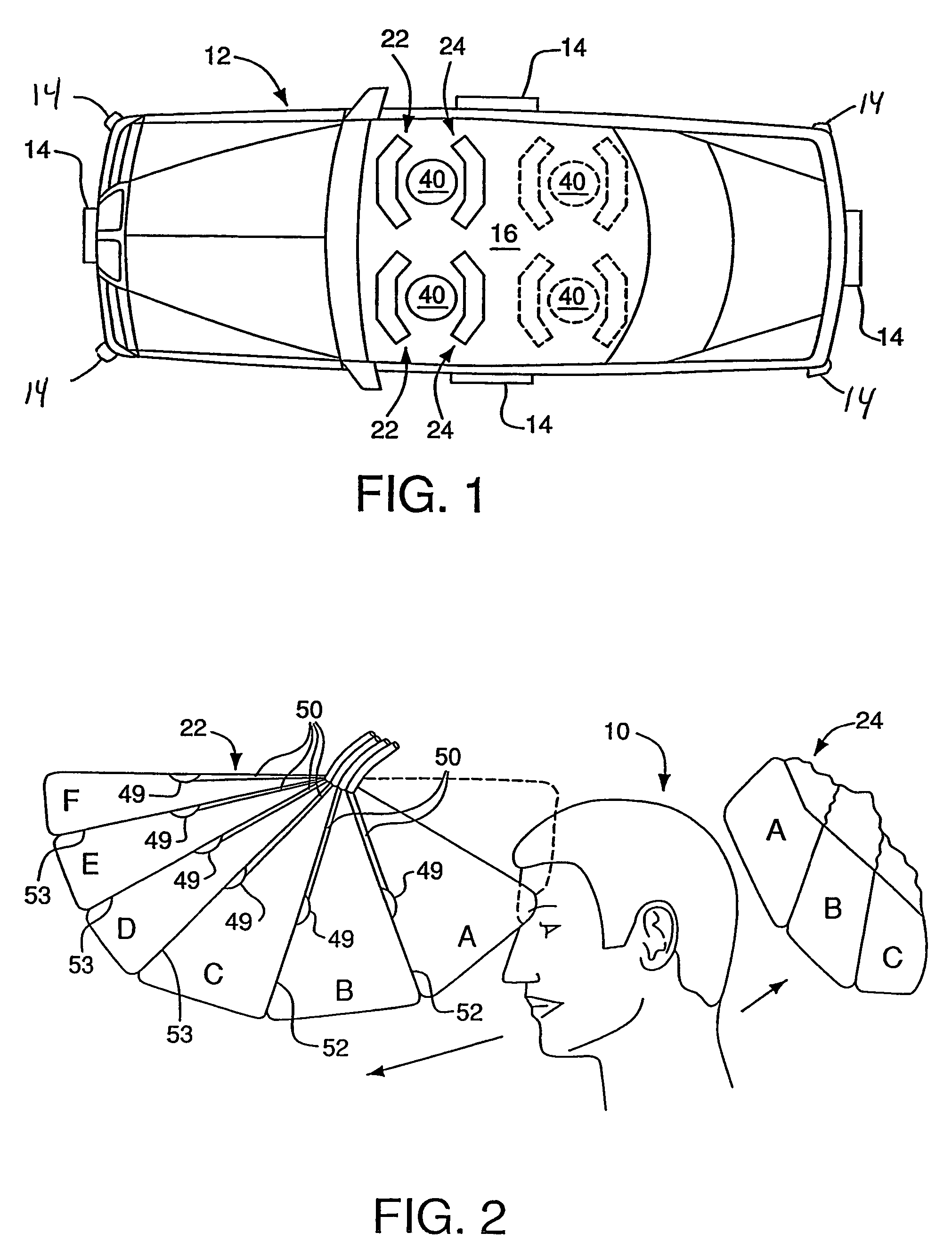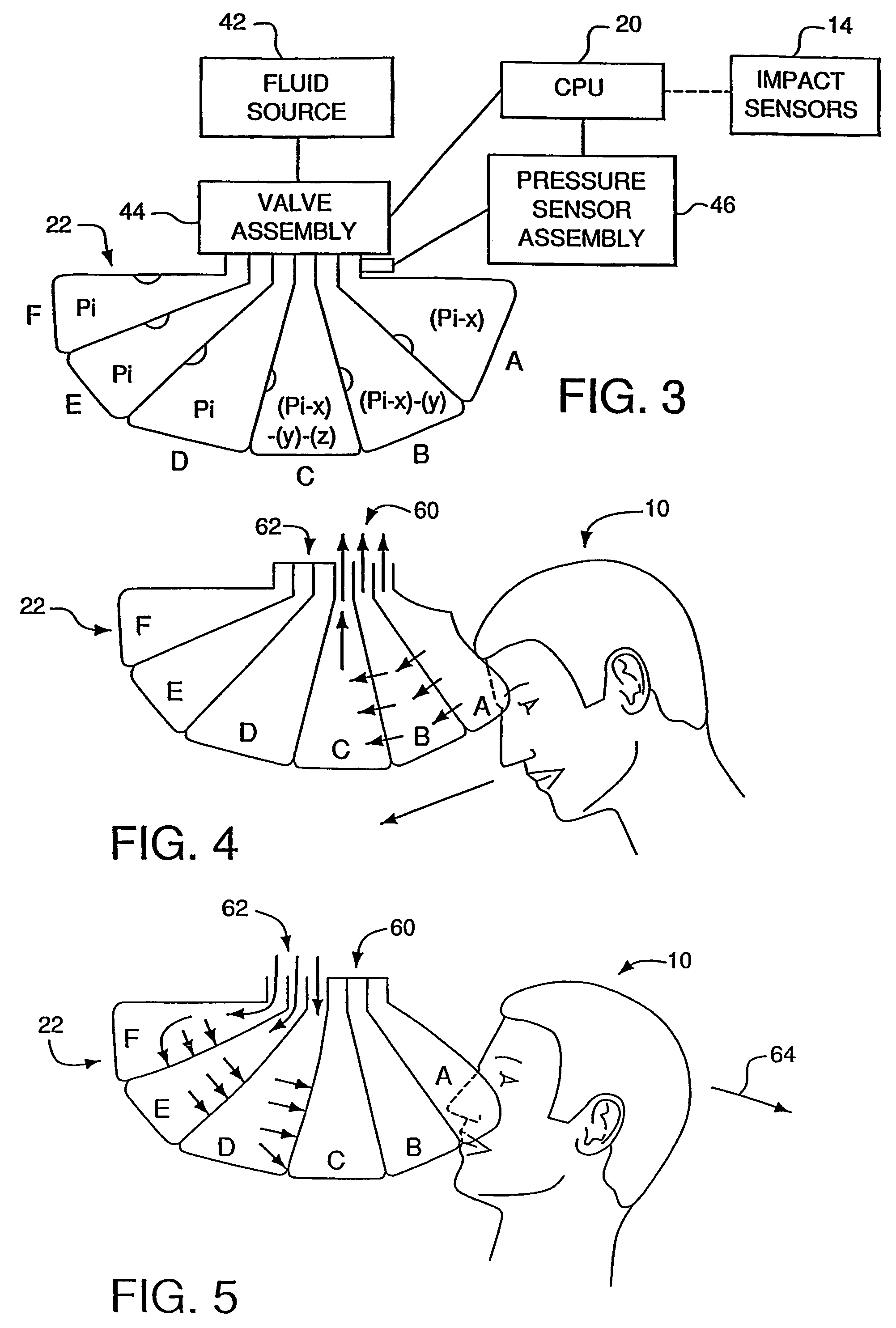Inflatable restraint assembly for vehicles
a technology for occupants and restraints, applied in child seats, vehicle components, vehicle arrangements, etc., can solve the problems of hyperextension and/or hyperflexion type injuries, occupants often suffer damage, and conventional airbags, etc., to reduce injury and reduce acceleration. the effect of declaration for
- Summary
- Abstract
- Description
- Claims
- Application Information
AI Technical Summary
Benefits of technology
Problems solved by technology
Method used
Image
Examples
Embodiment Construction
[0090]As shown in the accompanying drawings, the present invention relates to a restraint assembly designed primarily, but not exclusively, to protect occupants, generally indicated as 10, within a motor vehicle, generally indicated at 12.
[0091]More specifically, and as shown in FIG. 1, the vehicle 12 is equipped with a plurality of impact sensors, as at 14, located at various positions on the vehicle, so as to sense the occurrence of an impact of sufficient degree to possibly cause harm to occupants within the passenger compartment 16 of the vehicle 12. The location of the impact sensors 14 in FIG. 1 is meant to be representative only of a plurality of locations where such impact sensors 14 could be positioned, the knowledge of which is possessed by persons of skill in the art relating to air bag deployment. In addition, and as shown in FIG. 3, the impact sensors 14 are operably connected and / or coupled to a computer processor, such as a micro-processing chip or other central proce...
PUM
 Login to View More
Login to View More Abstract
Description
Claims
Application Information
 Login to View More
Login to View More - R&D
- Intellectual Property
- Life Sciences
- Materials
- Tech Scout
- Unparalleled Data Quality
- Higher Quality Content
- 60% Fewer Hallucinations
Browse by: Latest US Patents, China's latest patents, Technical Efficacy Thesaurus, Application Domain, Technology Topic, Popular Technical Reports.
© 2025 PatSnap. All rights reserved.Legal|Privacy policy|Modern Slavery Act Transparency Statement|Sitemap|About US| Contact US: help@patsnap.com



